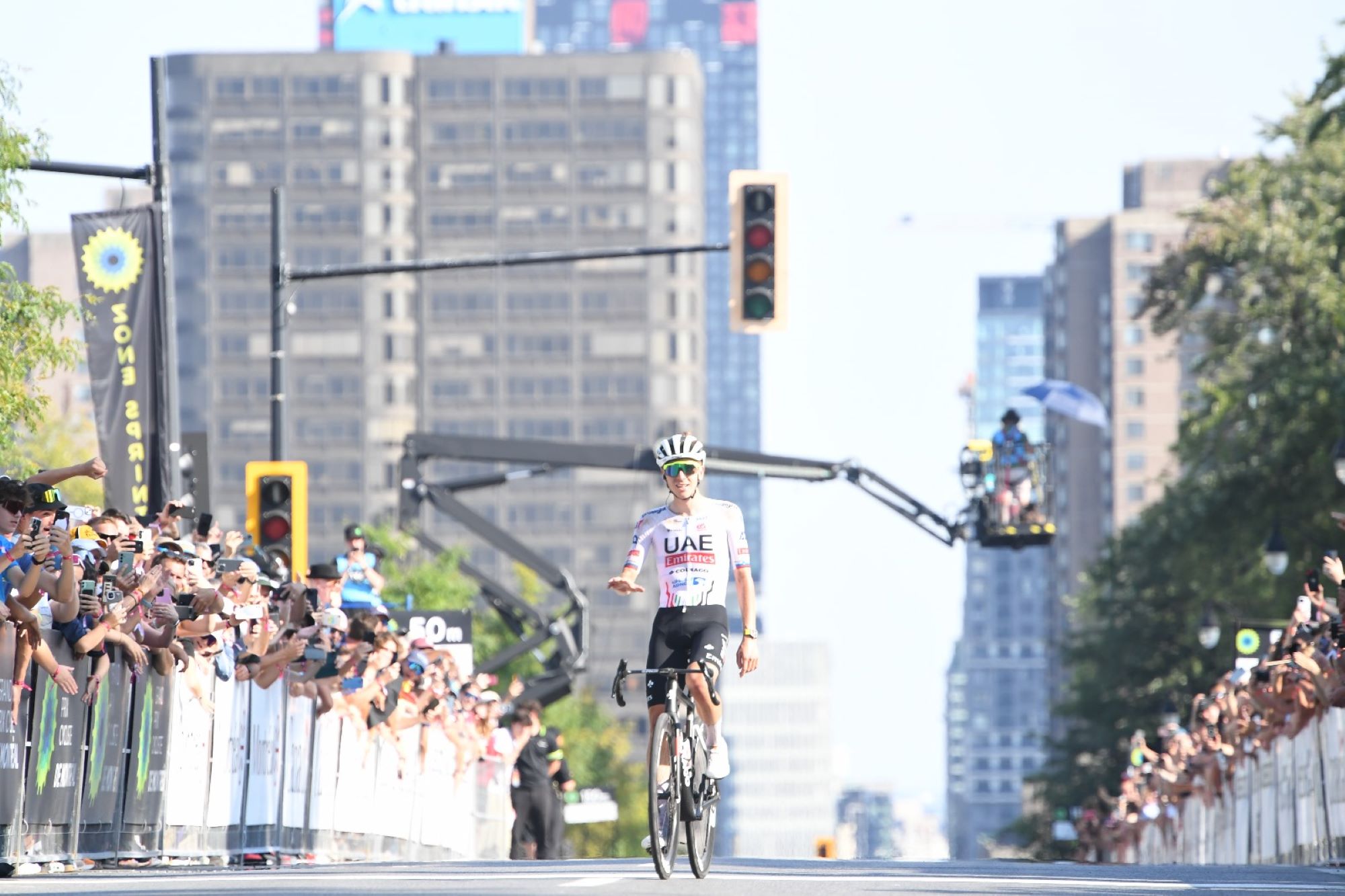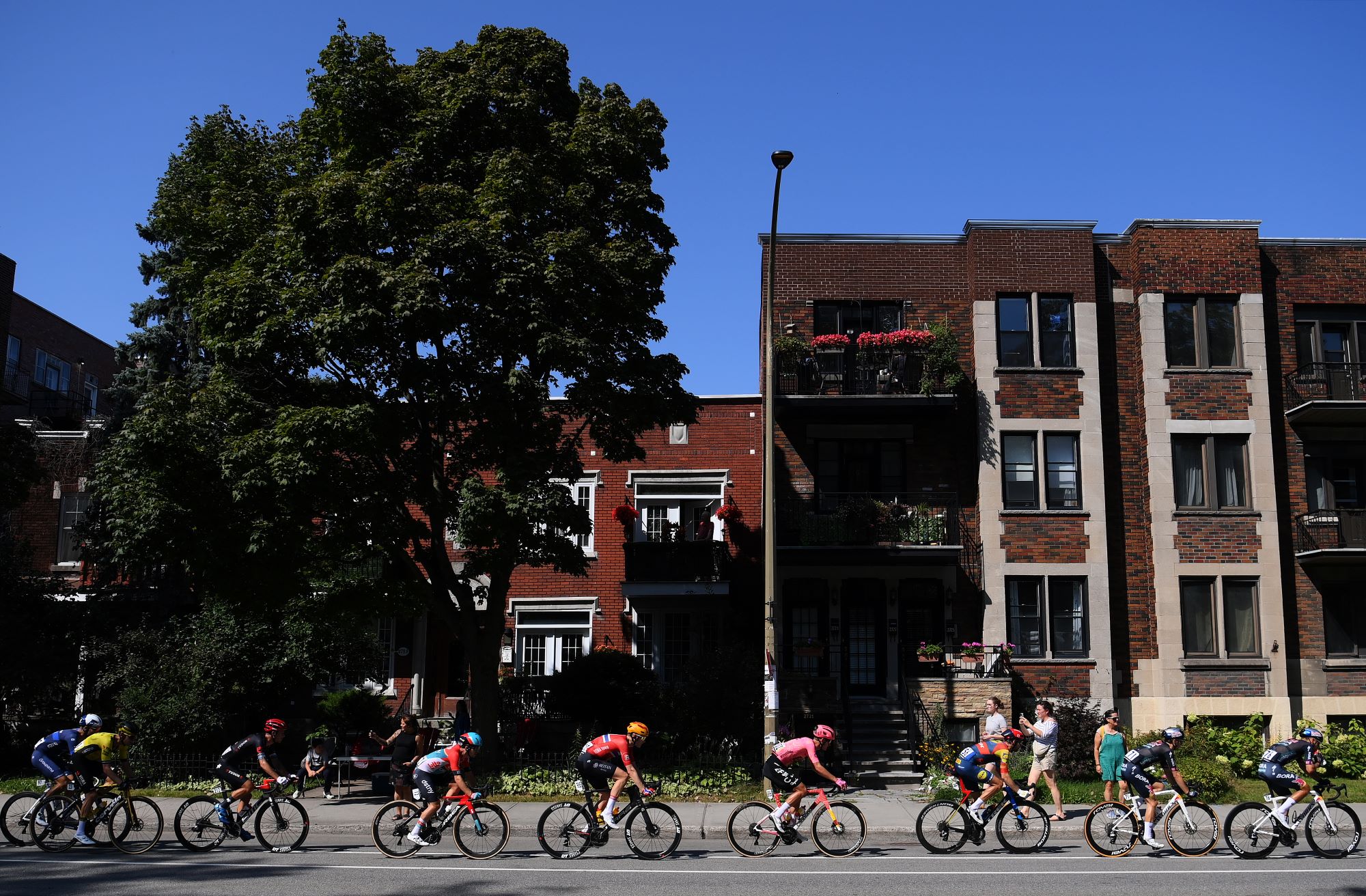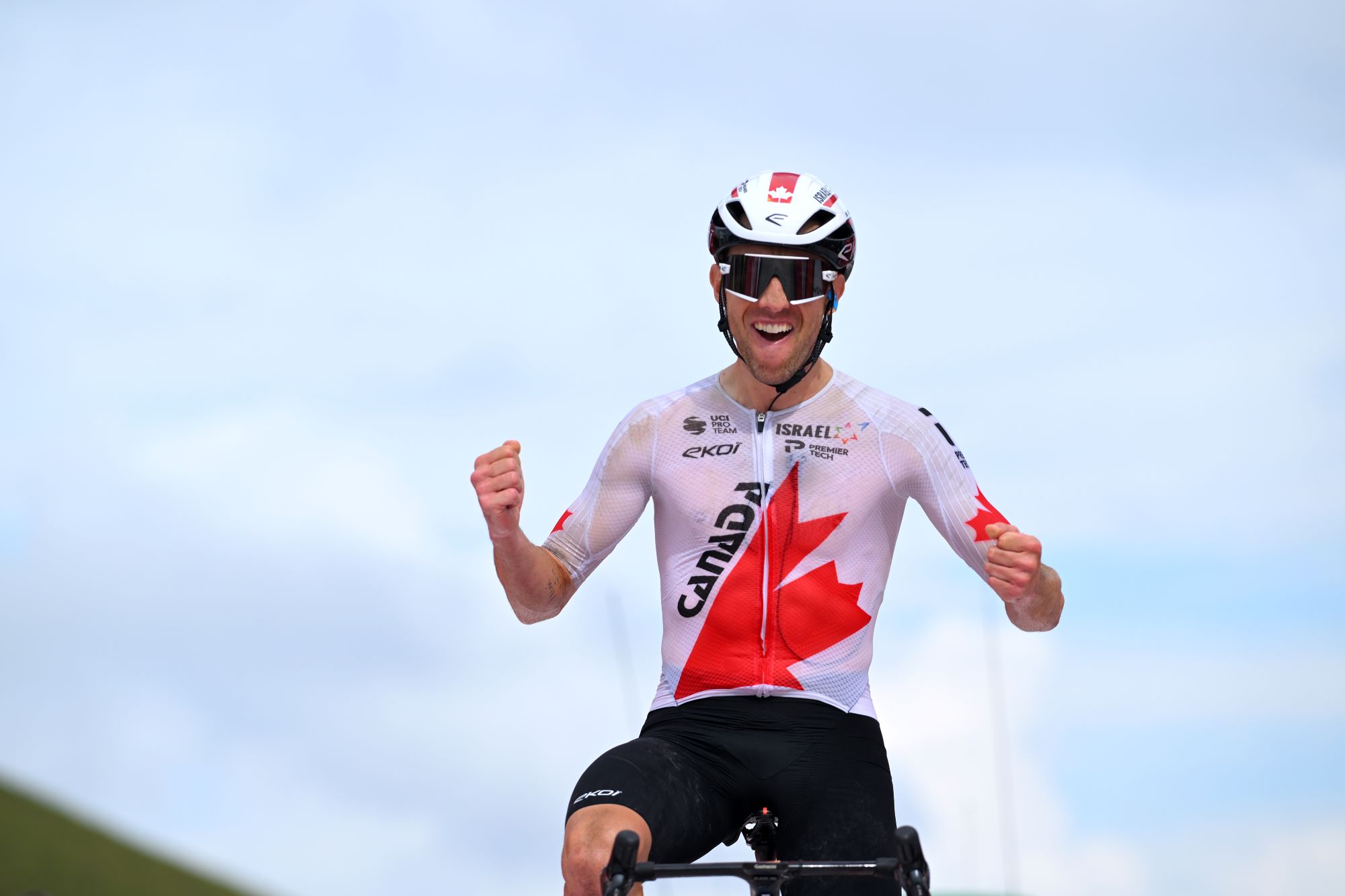
The best riders in the men’s WorldTour descended on Canada last weekend for the GP Québec and Montréal double header, 50 years on from Eddy Merckx’s famous triumph at the Montréal World Championships in 1974.
Merckx’s racing days may be long gone, but the current generation of young Canadian cycling fans have a new hero to get behind in the form of Tadej Pogačar. Prior to the first of the two races getting underway, hundreds of fans lined the Grande Allée in Quebec waiting to catch a glimpse of the three-time Tour de France winner after only seeing him on TV.
Pogačar revelled in the moment, riding up and down the lines of fans as he stopped for occasional photos and to sign autographs for his adoring public. His reception in Montréal was just as big, with a constant stream of photo and autograph requests from fans as he made his way to sign on at the start on the avenue du Parc before going on to win on the Mont-Royal circuit for a second time.
With the World Championships set to return to Montréal in 2026, the organiser of the race is hoping to ride the Pogačar wave as enthusiasm builds for the return of cycling’s showpiece event.
"Of course, Pogačar won here in Montréal two years ago. Last year, there was the Tour de France Netflix series, and then a few months ago, local people started noticing that Pogačar will come here to the Grand Prix, they think it’s incredible and they love it," Joseph Limare, race director of the two Canadian events said. "When I told them before that Pogačar won here in Montréal two years ago, they looked surprised, 'oh yeah?' they say. The Netflix effect is huge for cycling here in North America."
Fortunately for Limare and his colleagues, Pogačar will almost certainly be on the start line in 2026, and maybe even looking to add another rainbow jersey to his collection if, as expected, he triumphs in Zurich in a fortnight’s time.

1974 represented a new dawn in cycling, the first world championships outside Europe and a chance for the sport to begin to increase its global reach to new audiences and new demographics. Merckx and Geneviève Gambillon of France claimed the rainbow bands on offer, and 50 years on Gambillon was back in Montréal with the same jersey she claimed to witness yet another Pogačar masterclass.
The full details are yet to be fully signed off by the UCI and other authorities, but Limare explained that the 2026 Worlds course will bear a striking resemblance to the one used in '74 and inevitably the same course used in the GP Montréal this year.
"80% of the circuit will be used," he said. "Going back to '74, the start and finish was on Edouard-Montpetit. So yes, we are going to use a pretty similar circuit as the Grand Prix. But we will change maybe 15% of it, and we will try to have plenty of elevation in the final circuit, especially for the elites. The finish will still be on Avenue du Parc."
Given the success and growth of the second of the two Canadian WorldTour races, it would only seem fitting to use as much of the circuit through the park as possible, due to the history and identity it has continued to develop for itself as a major part of the late season men’s calendar.
This year’s Grand Prix de Montréal took place over 17 laps of a 12.3 kilometre circuit. Over the course of four climbs, the race also featured 4,573 metres of elevation gain, almost as much as a mountain stage in the Tour de France.
The amount of climbing is likely to increase to almost 5,500 metres in 2026 which, on paper, could make it one of the toughest world championships road race courses in recent memory, something which Pogačar alluded to in his pre-race press conference in Québec.
'I'm sure and I hope that kids will be inspired'

Israel-Premier Tech’s Mike Woods was at the GP Montréal, resplendent in his eye-catching Canadian national champions jersey. The Toronto native will be 39-years-old by the time the Worlds returns to Canada, but he didn’t rule out extending his career for one final shot at the podium.
Prior to the race, Woods spoke at length about the significance of the Worlds returning to his homeland for the first time in 50 years. He explained that he hoped the event would be far reaching and help to further develop interest in the sport not just in Montréal, but across Canada.
"I hope it continues to help grow cycling's prevalence," Woods said. "I already feel it in the sense that the sport has grown significantly since even I started racing. A lot of that has to do with the Montréal and Québec races. They've really helped grow the sport, particularly in Québec.
"Then with the Netflix documentary and with Canadians starting to race so well, again, the sport is definitely getting some momentum here. And then when you put the World Championships in front of a Canadian crowd, I'm sure and I hope that kids will be inspired."
The streets around Mont-Royal came alive on Saturday evening, full of cyclists getting a taste of the course alongside the pros as they headed out for a brief spin on arrival in the city.
After finishing their recon, Jayco AIUla and the GP Québec winner, Michael Matthews, were just one of several teams that descended on a local coffee shop, Le Club, for a flat white before heading back to their hotel rooms ahead of the race on Sunday.
Le Club has become something of an institution in Montréal, a cycling mecca for enthusiasts within the city to meet with like minded people and share a sport that at one time seemed a unique part of European sporting culture, as opposed to a spectacle seen on North American shores.
Building new communities
On the eve of the GP, Le Club founder and owner, Guillaume Garneau, told Cycling Weekly that the enthusiasm for the return of the Worlds was already mounting. He explained that local hospitality businesses thrive each September when the WorldTour events take place, and said he anticipated that same benefit to be amplified tenfold when the bigger race comes to town.
"I'm super proud of this city and the organiser of the Worlds wanting to promote as soon as possible the event that's happening in '26," he said. "First of all, I'm hoping that it's going to push the city to make our roads a little bit better in terms of potholes and that stuff. But I think the hype to this event has been phenomenal for the cycling community here.
"We've been open for seven years here and we've seen the cycling community grow through special moments and events. The Worlds here is just going to bring that curiosity to people that might not know this is happening, but they start hearing about it and will hopefully say what's the whole deal with cycling? Where can I start? The whole idea of having this event, this culminating event, is just the perfect opportunity to grow that community bigger and bigger, it’s so exciting."
"2011 was the first year of the Grand Prix and I went as a kid to the first few and I continue to go every year now," he continued. "The number of people watching has just exponentially grown. There's a couple of factors at play, but you have the best of the best in town once a year. It's the only North American WorldTour race. An event like this just brings curiosity not just to the races, but to cycling in general.
"We're just growing all the time. And then 2026 happening, it's just a dream come true for us here."
As Pogačar crossed the finish line on Sunday, he gestured to keep calm, a reference to a statue of Sir George-Étienne Cartier that stands on the finishing straight. If he turns up again in Canada next September and dominates in the same style, calmness will have gone out of the window. World Championships excitement will have reached fever pitch instead.






